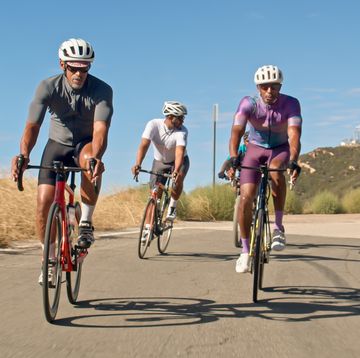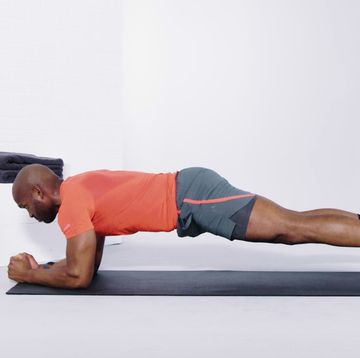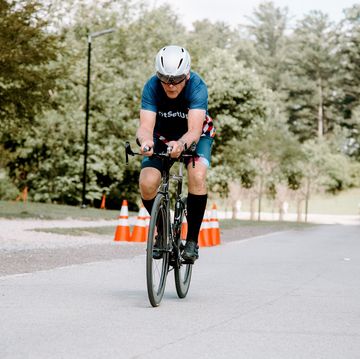- The benefits of being aerobically fit and participating in high-intensity cardio in middle age can last for up to 10 years, according to a new study from the journal Frontiers in Physiology.
- But low-intensity exercise can also benefit your metabolic health—like blood pressure and insulin levels.
There are tons of reasons why you might love being on your bike: to get from point A to point B, to chase that PR, or simply just to stay in shape. Regardless of your motivation, the physical benefits of cycling—among other forms of exercise—can stay with you for longer than you might expect, according to new research from the journal Frontiers in Physiology.
Researchers followed up with participants of a different study—published in the journal Medicine & Science in Sports & Exercise that ran from 1999 to 2003—10 years after the fact to see what their current health was like.
The 2003 study involved 384 sedentary, overweight people between the ages of 40 and 65 years old who had to either remain sedentary or start exercising regularly for eight months. Those who had to exercise were randomly split into the following three groups: low amount of moderate-intensity exercise, low amount of vigorous-intensity exercise, and high amount of vigorous-intensity exercise. Those who exercised in any capacity saw improvements in their aerobic fitness, blood pressure, insulin sensitivity, and waist circumference.
So, to figure out what the lasting impact on these improvements might be, researchers gathered 104 of the previous study’s participants for a new “reunion” study. First, they filled out medical history and physical activity questionnaires. Next, they had their heights, body masses, resting blood pressures, and minimal waist circumferences measured. Finally, they underwent a maximal treadmill exercise test to measure their cardio fitness.
The results? The participants from the 2003 study who either remained sedentary or who did a low amount of moderate-intensity exercise were less aerobically fit. They lost 10 percent of their aerobic capacity in the 10 years that followed—a rate that was twice as high as those who performed vigorous activity in the original study.
People start naturally losing aerobic fitness after around age 28 or so due to a 1 percent decrease in max heart rate per year, says study coauthor William Kraus, M.D., a professor of medicine Duke University’s Division of Cardiology. This suggests that vigorous activity could stave off the age-related decline in fitness more than moderate activity, possibly because vigorous activity helps strengthen your heart, improving its ability to pump blood to—and strengthen—your lungs and other parts of your body, according to the National Heart, Lung, and Blood Institute.
[Want to fly up hills? Climb! gives you the workouts and mental strategies to conquer your nearest peak.]
But while those who did moderate-intensity activity didn’t gain as much cardio benefit, they still experienced metabolic benefits, such as no increase in blood pressure and a decrease in fasting insulin and glucose levels. Lower fasting insulin and glucose levels means you have less of a chance at developing conditions like obesity and diabetes.
And while researchers aren’t totally sure why vigorous exercise helps maintain a good level of cardio fitness in the longterm, but low or moderate exercise helps maintain good metabolic health, they are working to understand the connection better.
Bottom line: Your hard rides can help preserve your aerobic fitness for years to come, but don’t dismiss the health benefits of lesser-intense exercise. Make time for both in your daily life—say, walk a little more each day, even if you have a workout scheduled for later that day.
“One does not have to do vigorous exercise to have some very substantial health benefits—particularly on blood pressure and glucose control (like diabetes prevention),” Kraus said.














